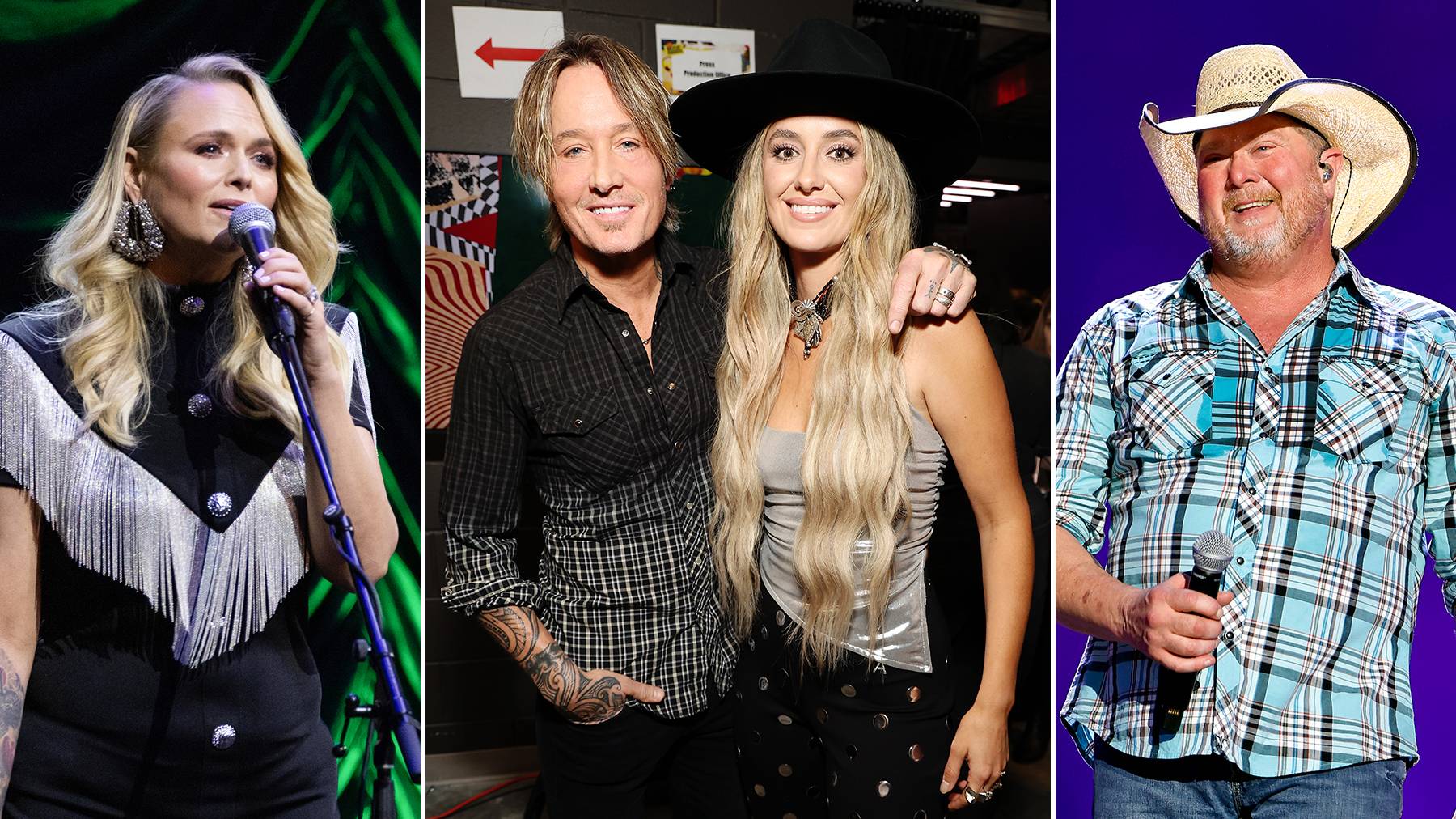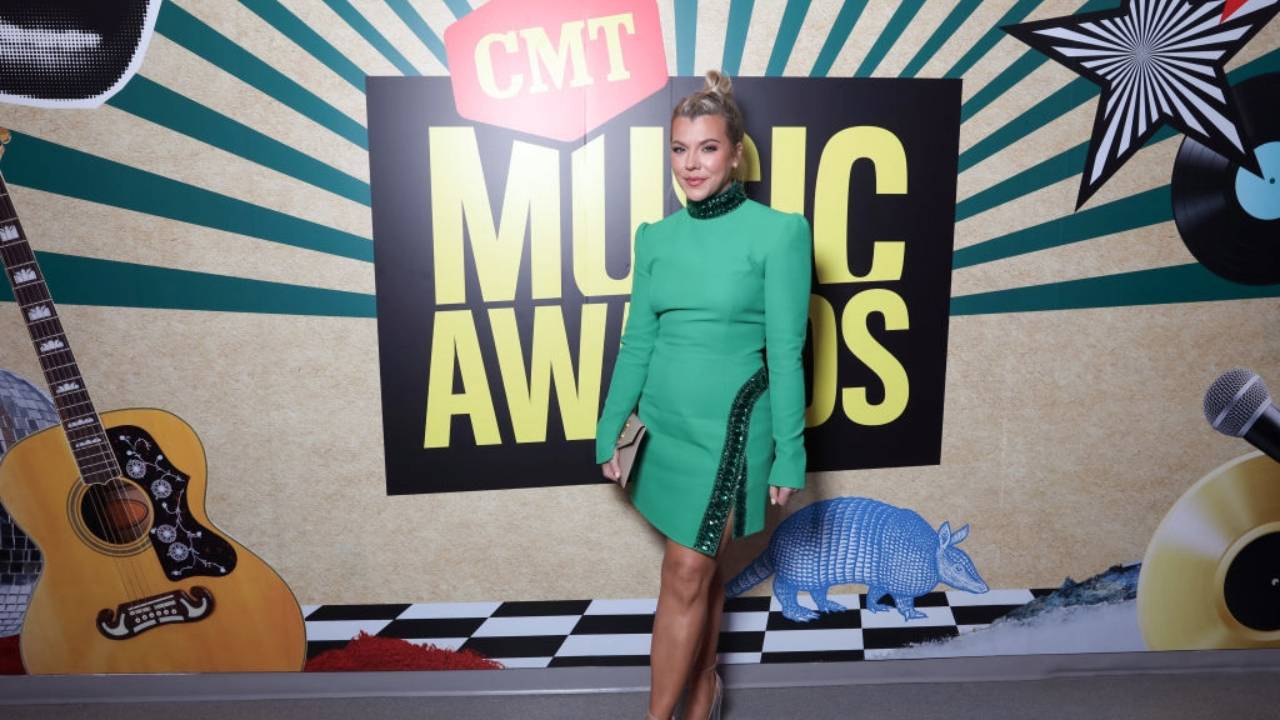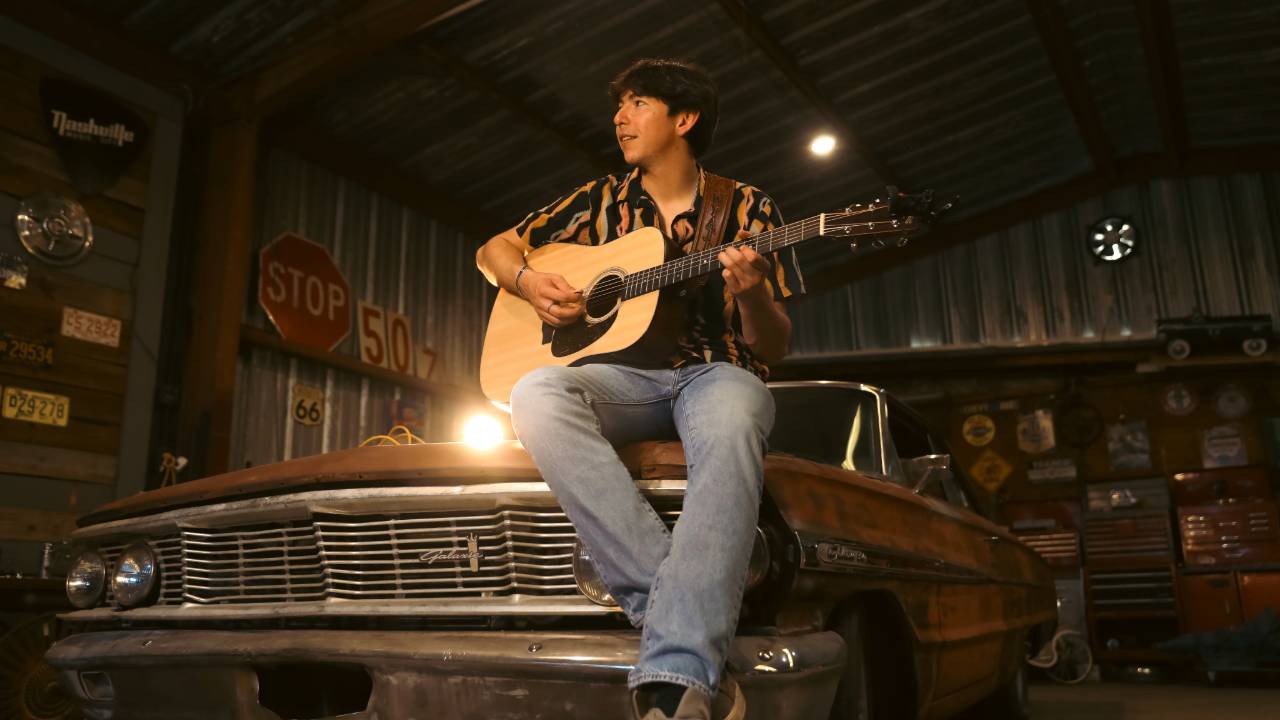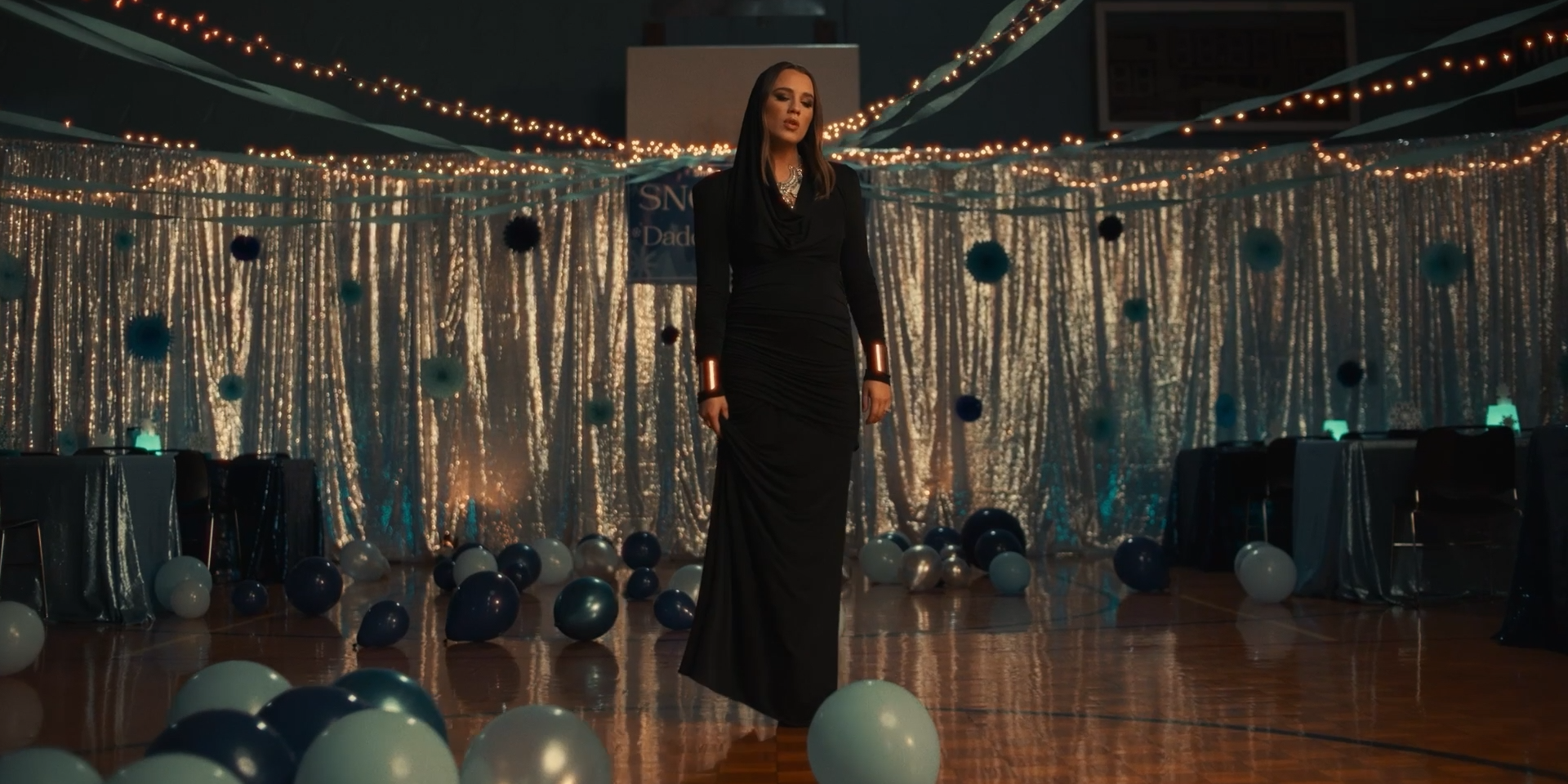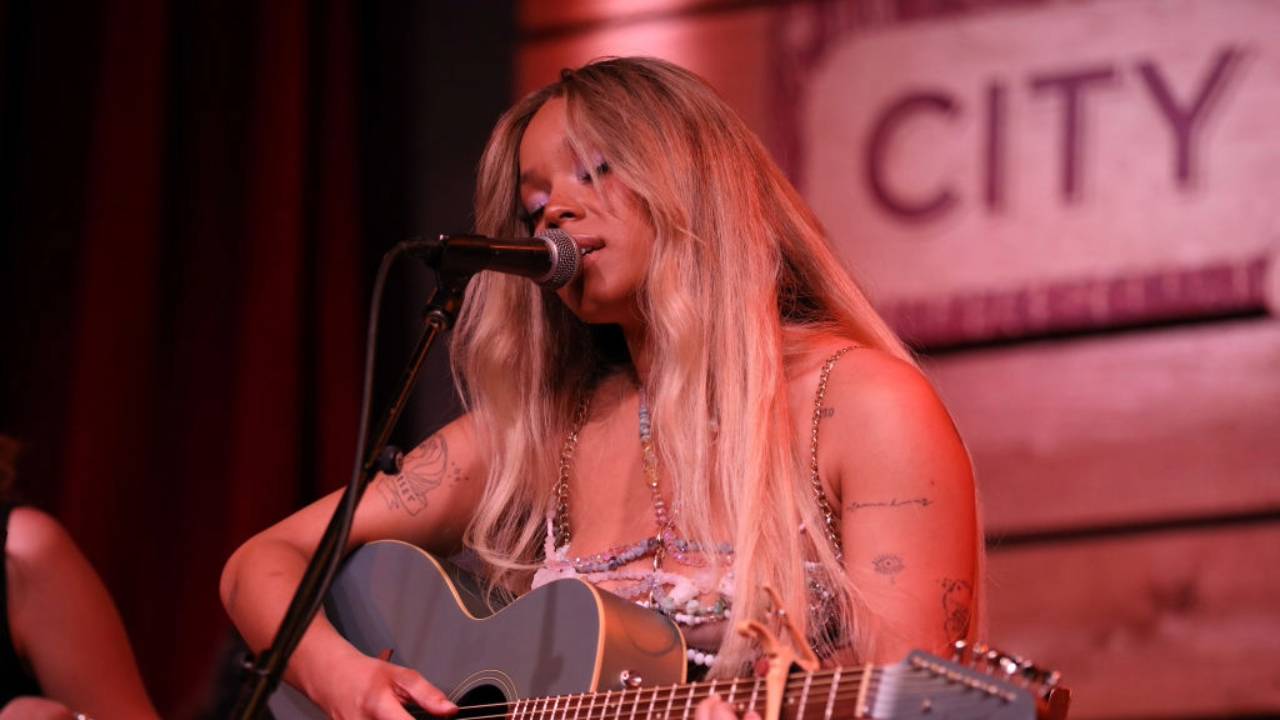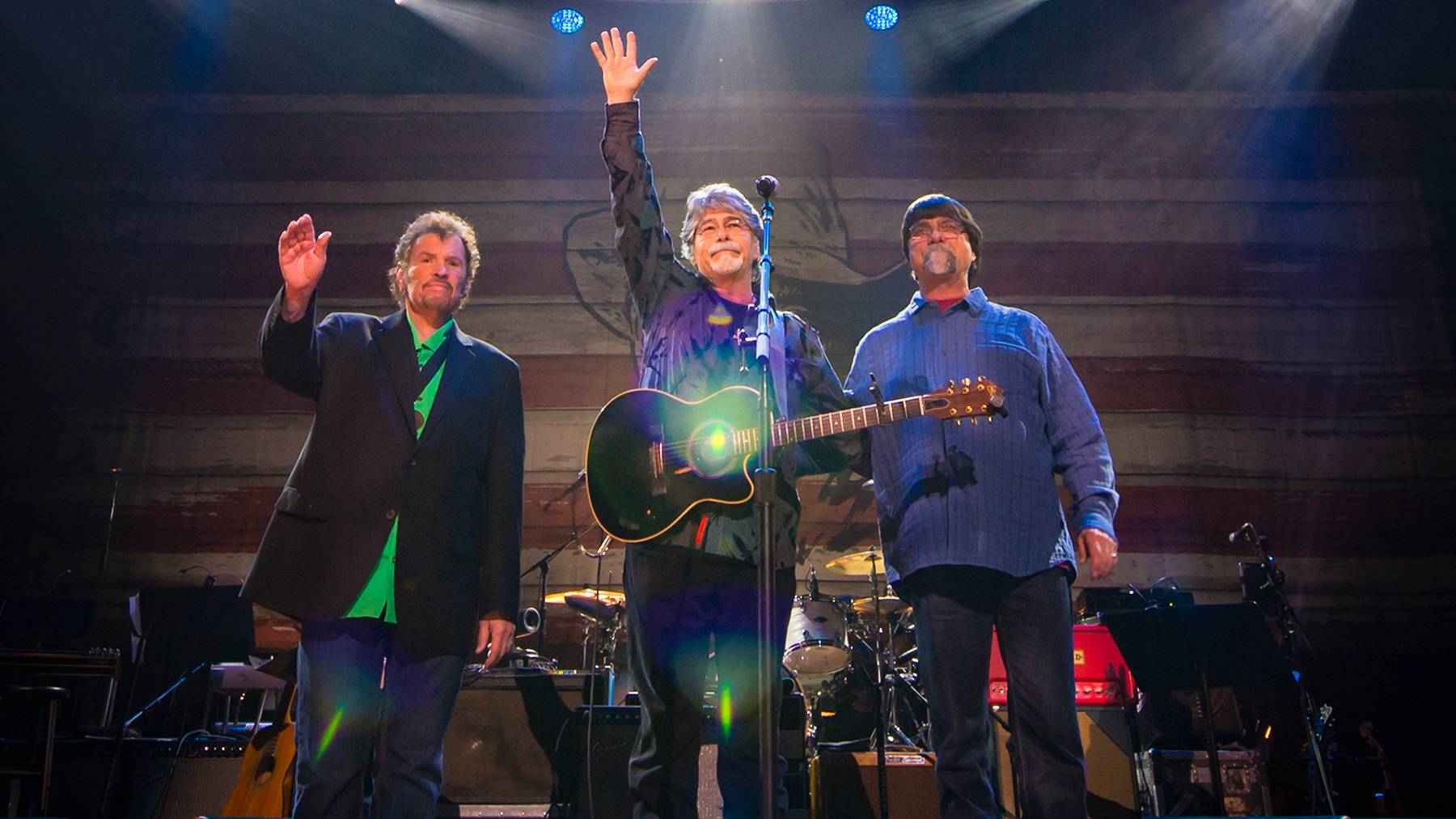Buck Owens' Legacy Continues at Crystal Palace

BAKERSFIELD, Calif. -- There's a real symmetry at work with the upcoming release of Dwight Yoakam's Dwight Sings Buck album, which recognizes the legacy of Buck Owens. The CD comes out Oct. 23 -- Yoakam's 51st birthday. But the street date is also the 11th anniversary of the grand opening celebration for the Crystal Palace, another enduring marker of the late Owens' contributions to the city of Bakersfield.
The Palace is a unique venue, one that combines Owens' penchant for good sound, good food and good times. It uses the motif of an Old West town to create a homey atmosphere and features a huge range of Buck-related memorabilia so that visitors -- if they hadn't already figured it out -- will quickly realize the building's founder had a major place in American culture.
"The Palace," Yoakam says, "has always been a place where Buck and I did whatever came into our heads at any given moment."
The venue's unpredictability was not unique to Yoakam. George Jones once showed up just to say hello to Owens, and the two spent an impromptu hour on stage telling war stories and singing songs associated with another Bakersfield figure, Merle Haggard. After Brad Paisley casually announced at a 2006 concert in Bakersfield that he wanted to play a post-show event at the Palace, 2,000 people soon lined up for one of the venue's 550 seats. Willie Nelson likewise gave a one-hour show when he paid an off-the-cuff visit. And Owens once called a visiting Jeff Bates up out of the crowd and launched into a veteran-and-newcomer duet of "Silver Wings" -- surprising even Bates.
Those names represent just a handful of the acts that have played the Palace. Pam Tillis, the Dixie Chicks, Ray Price, Josh Turner, Clint Black, Ricky Van Shelton, John Anderson and the rock band Cake are on a long list of folks who have appeared there -- many of them at a time in their careers when it would have made more sense to visit a larger music hall in the area.
"It's neat the people we've gotten here because it was Buck's place," says Jim Shaw, who served as Owens' right-hand man during his 37-year tenure with Owens' company and as a band member in the Buckaroos. (Owens died in March 2006 of an apparent heart attack just hours after performing at the Crystal Palace.)
Shaw knows the history pretty well. He was around when Owens first conceived of the place around 1980 and had a hand in some of the decision-making when the country music legend finally committed to the project in the mid-1990s. Owens had his pick of three different properties in the area, eventually settling on its current location at Sillect Avenue and Buck Owens Boulevard, right off of U.S. Highway 99.
Originally, Owens tried to incorporate the best facets of some of his favorite venues across the country, including Rockefeller's in Houston, the Birchmere in northern Virginia and the Crazy Horse Saloon in Santa Ana, Calif. Then Shaw watched the project grow into a $7.4-million investment that opened more than a year late -- mostly because of Owens' frequent design changes.
"He wasn't good at lookin' at a blueprint," Shaw laughs. "He didn't have that visualization thing goin', and he'd actually have to see it [done]. So then he'd say, 'Oh, yeah, I love it. It's absolutely perfect, except it should be bigger and it should be over here.'"
As a result, Owens signed off on 135 change orders, some of them adding more than $100,000 of extra costs at a time. Owens never complained about the bill and always took the blame for the spiraling price of the Palace.
In fact, Shaw recalls that the only times Owens got angry with him about finances were "when I didn't spend enough, when I tried to save money. He really liked doin' things right -- do it once, do it right. Sometimes we'd get it right if we had to do it six times."
In the long run, getting it right at the Palace meant doing some unique things. The walls are designed to provide the appearance of a town from the Old West, with a variety of storefronts for a barber shop, a feed store and a jailhouse, among others. Old photos show Owens with hundreds of celebrities -- including Dean Martin, Billy Ray Cyrus, Roy Acuff and Ronald Reagan. And glass cases built into the structure house some of his rhinestone suits, along with his trademark red, white and blue guitar, honorary proclamations from cities around the nation and a sheriff's costume and script from a TV movie, Murder Can Kill You.
Patrons who show up late occasionally brush up with the headline talent. The back of the stage was placed near the entrance, and the only way to find your seat is to walk through the same corridor the talent uses to mount the stage.
As a result, one of the first things most people see is not the stage, but the bar -- particularly the backdrop. Owens wanted a "wow factor" for the building, Shaw remembers, and that came in the form of a car that Owens possessed: a 1972 Pontiac convertible with steer horns on the hood, silver dollars embedded in the dash and cowboy-related images hand-tooled in the leather seats. The Buckmobile is now hoisted up over the bar glasses and set at an angle on an A-frame platform for best viewing. The Country Music Hall of Fame and Museum had reportedly wanted the car for display in Nashville, but once Owens decided to make it a focal point for the Palace, it was bolted in so securely it'll likely never come back out.
"If anybody ever buys the Palace or they wanna make it into a church, the car is gonna have to be behind the altar," Shaw maintains. "It's there unless they cut it up."
The food at the Crystal Palace makes the entire experience even better. Pizza and burgers are among the primary items on the menu, though the options also include upper-crust entrees such as halibut, pork chops and a rib-eye steak that -- at $39.95 -- is by far the most expensive choice. And some of the desserts -- particularly the Palace Mud Pie -- guarantee a major sugar rush.
Once you finish the meal, every seat in the house is in good proximity to the stage for the actual show. A couple of video screens provide tight shots, though the camera view is rarely necessary because of the place's coziness. In addition, the acoustics are strong enough that some performers like to turn the microphones off during soundcheck just to do a song or two unaltered.
Yet as great as the Palace is inside, it's still most closely associated with an event that happened in the parking lot. In May 2005, Owens unveiled 10 bronze statues that now stand in the lobby of the Palace, each paying homage to a significant musician, such as Elvis Presley, Johnny Cash, George Strait and Hank Williams. Owens threw a public unveiling concert outdoors, where -- in a moment that's now legendary among country fans -- Garth Brooks got down on one knee to propose to Trisha Yearwood in front of 7,000 people.
At least one other artist in attendance that night was miffed that Brooks had upstaged the event, but if Owens shared that opinion, he never said a word about it to any of his employees.
"Buck was always about the moment," says Crystal Palace concert promoter Jerry Hufford.
It was a pretty expensive moment, too, and Owens had to be convinced to sell tickets to the event.
"Buck spent close to a half-million dollars that night on that party," Shaw recalls. "At first, he said he wanted it to be free, and we said it'd shut the freeway down. So he said, '$10.' He paid the bill."
The Crystal Palace remains a real tribute to Owens' love for the city of Bakersfield.
"Someone that spends over $7 million on a place that seats 500 people is destined to fail if this was a business venture," Shaw concedes. "But that's not what it was.
"He just wanted to leave behind something that was everything he'd dreamed through the years. He didn't care about the money part. He wanted it to be just right."
